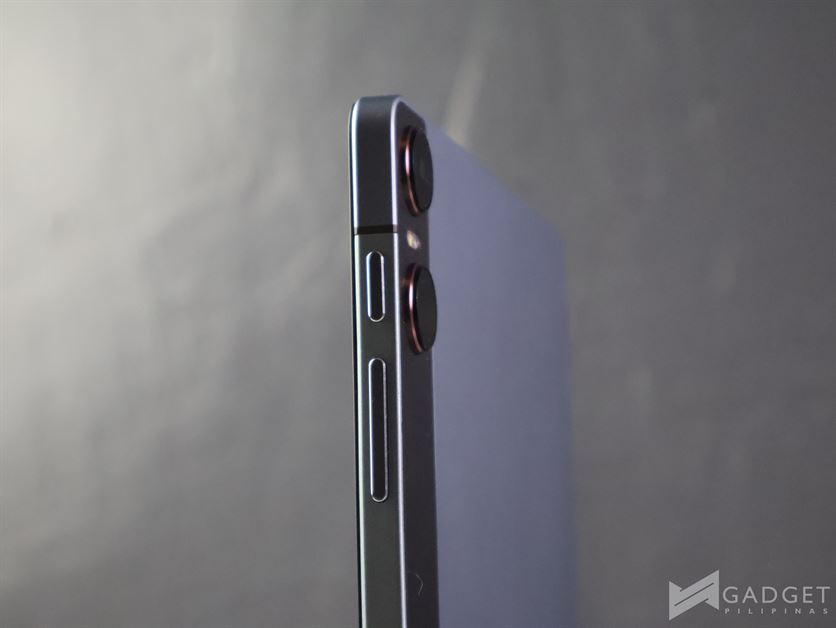In the crowded world of entry-level tablets, the TechLife Pad aims to be at the upper part of the list, with a focus on entertainment and mobility. It’s aimed at on-the-go millennials, entertainment enthusiasts, and students. After spending some time with the device, here are our initial thoughts on its key features.
Display

The first thing that catches your eye is the 10.36-inch 2K display. With a resolution of 1200×2000 and 184 PPI, it offers a decent viewing experience. The 10:6 aspect ratio is well-suited for various types of content, from streaming videos to simply browsing the web or social media. The bezels are thicker than what I will consider as ideal, but at least you have more space to grip the device on the front.

With a maximum brightness of 450 nits, the screen remains visible in most indoor environments, though it might struggle a bit under direct sunlight. Being a more traditional LCD, and with a 60Hz refresh rate, you will notice that colors are a bit pale, text isn’t as sharp, and transitions aren’t as smooth. Without knowing the price tag, but knowing that this is an entry-level device, those are to be expected.
Audio

One of the standout features of the TechLife Pad is its quad stereo speaker setup. This audio configuration, with two speakers on each side, delivers a surprisingly decent sound experience for an entry-level tablet. The audio is full-bodied and can reach good volumes without significant distortion.
Battery

Battery life is another area where the TechLife Pad is expected to shine. With a 7000mAh battery, realme claims a standby time of at least 15 hours, and a music playback time of 4.4 hours. Of course, real-world usage might yield different results depending on factors like screen brightness and network connectivity.
The 10W charging isn’t exactly blistering, but again, for an entry-level device, it is something that is to be expected.
Design and Build Quality

The design of the TechLife Pad is sleek and modern. At just 7.4mm thick and weighing 453 grams, it strikes a good balance between screen size and portability.
The metal construction, with over 90% aluminum, gives it a premium feel that belies its budget-friendly price point. Available in Graphite Blue and Graphite Gray, the color options are subtle and professional.
Software

On the software front, the TechLife Pad runs on Android 14, offering a clean, stock Android experience. This means you get access to the latest features like Google Kids Space and split-screen functionality, which can be particularly useful on a larger display.
Camera

Entry level tablets are usually only average at best in terms of taking photos, and that is certainly the case with the TechLife Pad. There’s an 8MP rear camera and a 5MP front camera, which should be enough for those social media updates, but we’ll save our sample shots for the full review.
Performance
The UNISOC T606 on the TechLife Pad isn’t exactly the most powerful chip out there, but so far, it has been enough for what I do with this tablet – social media, a bit of web browsing, and media consumption. It’s not the smoothest experience if you’re used to more powerful devices, but it does the job. We’ll see how it fares in gaming in our full review.

There’s also 4GB of RAM and 128GB of storage, which can be expanded using a microSD card – a welcome feature. Oh, and you can use a SIM card with this tablet too.
TechLife Pad: Verdict so Far
While it may not boast the most cutting-edge specifications in every department, the TechLife Pad seems to be a decent entry-level tablet that works well for simple day-to-day tasks and depending on what you play, possibly a bit of gaming. The ability to add more storage and install a SIM card is also noteworthy.
The screen can be a bit off putting if you’re used to those with higher refresh rates and thin bezels, but for a tablet which we expect to be in an entry-level price point (if they get the pricing right), it’s forgiveable.
Emman has been writing technical and feature articles since 2010. Prior to this, he became one of the instructors at Asia Pacific College in 2008, and eventually landed a job as Business Analyst and Technical Writer at Integrated Open Source Solutions for almost 3 years.




